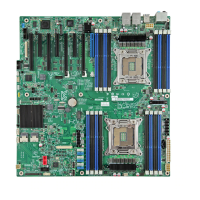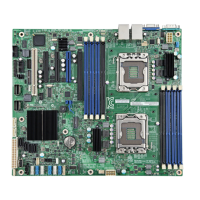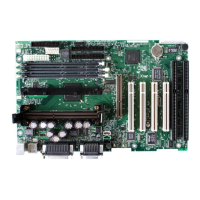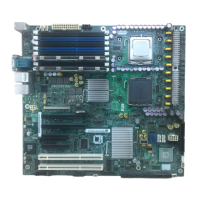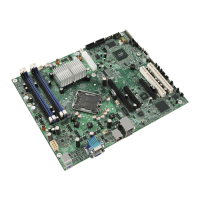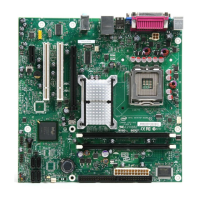Platform Management Functional Overview Intel® Server Board S2400SC TPS
80 Intel order number G36516-002 Revision 2.0
There is no precedence or lock-out mechanism for the control sources. When a new
request arrives, previous requests are terminated. For example, if the chassis ID button is
pressed, then the chassis ID LED changes to solid on. If the button is pressed again, then
the chassis ID LED turns off.
Note that the chassis ID will turn on because of the original chassis ID button press and
will reflect in the Virtual Front Panel after VFP sync with BMC. Virtual Front Panel won’t
reflect the chassis LED software blinking by a software command as there is no
mechanism to get the chassis ID Led status.
Only Infinite chassis ID ON/OFF by a software command will reflect in EWS during
automatic /manual EWS sync up with BMC.
Virtual Front Panel help should available for virtual panel module.
At present, NMI button in VFP is disabled in Romley. It can be used in future.
The Embedded Platform Debug feature supports capturing low-level diagnostic data (applicable
MSRs, PCI config-space registers, and so on). This feature allows a user to export this data into
a file that is retrievable from the embedded web GUI, as well as through host and remote IPMI
methods, for the purpose of sending to an Intel engineer for an enhanced debugging capability.
The files are compressed, encrypted, and password protected. The file is not meant to be
viewable by the end user but rather to provide additional debugging capability to an Intel support
engineer.
A list of data that may be captured using this feature includes but is not limited to:
Platform sensor readings – This includes all “readable” sensors that can be accessed by
the BMC FW and have associated SDRs populated in the SDR repository. This does not
include any “event-only” sensors. (All BIOS sensors and some BMC and ME sensors are
“event-only”; meaning that they are not readable using an IPMI Get Sensor Reading
command but rather are used just for event logging purposes).
SEL – The current SEL contents are saved in both hexadecimal and text format.
CPU/memory register data – useful for diagnosing the cause of the following system
errors: CATERR, ERR[2], SMI timeout, PERR, and SERR. The debug data is saved and
timestamped for the last 3 occurrences of the error conditions.
o PCI error registers
o MSR registers
o MCH registers
BMC configuration data
o BMC FW debug log (that is, SysLog) – Captures FW debug messages.
o Non-volatile storage of captured data. Some of the captured data will be stored
persistently in the BMC’s non-volatile flash memory and preserved across AC
power cycles. Due to size limitations of the BMC’s flash memory, it is not feasible
to store all of the data persistently.
SMBIOS table data. The entire SMBIOS table is captured from the last boot.
PCI configuration data for on-board devices and add-in cards. The first 256 bytes of PCI
configuration data is captured for each device for each boot.
System memory map. The system memory map is provided by BIOS on the current boot.
This includes the EFI memory map and the Legacy (E820) memory map depending on the
current boot.
Power supplies debug capability.
